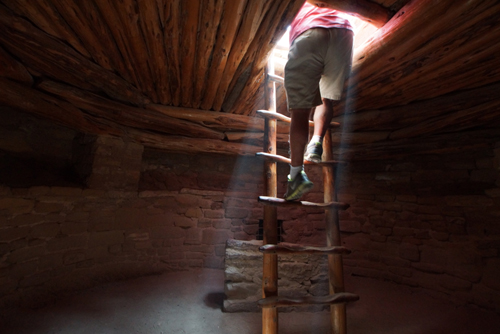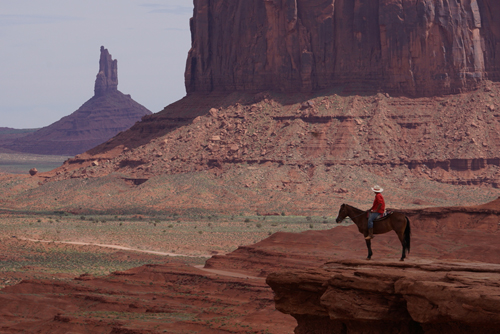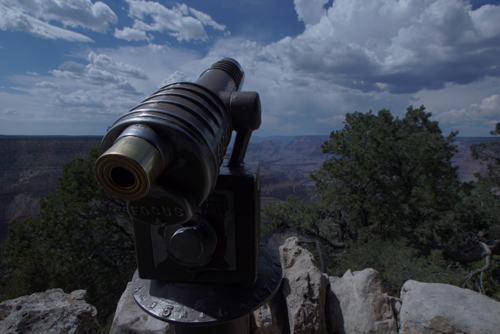About 16km from Cortez is the Mesa Verde National Park. This is one of the areas in Colorado that has well preserved buildings and artifacts from the Pueblo Indians. This prehistoric civilisation preceded the Navaho and were in this area 3,000 to 5,000 years ago. However it was first inhabited by Paleo-Indians around 9,500 BC.
The Mesa Verde or Green Table in Spanish, describes the plateau where these ancient civilisations live their semi nomadic lifestyle.
The National Park was created by president Theodore Roosevelt in 1906 and is also a UNESCO World Heritage Site. It’s 21,240 ha in area, with 4,000 sites and 600 cliff dwellings.
Montezuma Valley was home to 35,000 Ancestral Puebloan people during the 1200s. The development of the Pueblos or houses took place over many centuries. Starting with pit houses and culminating in the brick built cave dwellings – these brick houses are the main attraction of Mesa Verde.
The Puebloans used an atlati, a form of throwing stick, similar to the woomera of the Australian Aboriginals. They subsequently went on to develop the bow and arrow and learnt how to crop, domesticate animals and make pottery.
It’s amazing the difference a ready supply of wild fruit, vegetables and animals had in their development. That, combined with the contact the Puebloans had with more advanced civilisations from the south, led to them developing a rich diverse culture.
The modern day Hopi and Jumi Indians are the ancestors of the Puebloans.
We travelled along Chapin Mesa, which with the Wetherill Mesa are the two main inhabited areas.
The Chapin Mesa Archeological Museum has a number of excellent dioramas detailing the history of the Ancestral Pueblo people. It also contains fine examples of their basket weaving and geometric pottery in black and grey. There were also many stylised animal motifs that are widely used by the locals today – especially in marketing their adventure tours and accommodation.
Our park ticket allowed us to visit Spruce Tree House. This is one of the best preserved cliff dwellings on the Mesa Verde. It shows how the Ancestral Indians built brick ‘apartment blocks’ within the caves below the the Mesa.
These housed many families and were part of a community building program that included the Square House, which has a tall tower of five floors.
We also visited Sun Point View, Cliff Palace View and Cliff Canyon Overlook.
On our second night in Cortez we had dinner at the Main Street Brewery. We had a drink there the night before and I found their craft brews exceptional.
Their food wasn’t shabby either.
It had been suggested to us that because the serves are so large in the US, the best strategy is to share the main course, or entrées, as they are known.
We shared the Smoked Ribs and there was more than enough for two.












